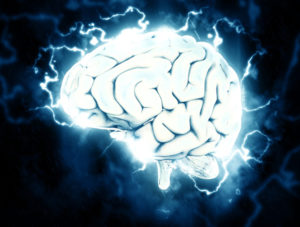Traumatic Brain Injuries – by the numbers
 Because of the way the brain is housed in the cranium, explains Leanne O’Neil of INDY Neurofeedback, an impact from almost any direction can cause damage. Although the brain is incredibly resilient, is it also quite susceptible to injury.
Because of the way the brain is housed in the cranium, explains Leanne O’Neil of INDY Neurofeedback, an impact from almost any direction can cause damage. Although the brain is incredibly resilient, is it also quite susceptible to injury.
Even relatively minor brain trauma can cause lasting damage, often manifesting in headaches, slurred speech, depression and/or anxiety, fatigue, dizziness, mood changes, or irritability. Sometimes after a TBI (Traumatic Brain Injury) symptoms may be harder to pinpoint and diagnose, and may include reduced concentration, difficulty with memory retrieval, and poor organization and planning.
Here are some fairly startling TBI statistics in the U.S., gathered and published by WebMD:
- 47% of brain injuries are attributed to falls, the leading cause of TBI.
- 8 million Traumatic Brain Injuries were recorded in 2013, according to the most recent Center for Disease Control (CDC) data.
- 153 deaths per day occur from injuries that include a brain injury.
- 53,000 deaths are attributed to TBIs annually (CDC).
- $400,000 is the average lifetime cost (per case) for a severe brain injury.
- An estimated 3.2 to 5.3 million Americans are living with a TBI-related disability.
- 47% increase in ER visits from TBIs from 2007 to 2013.
- 70% of all sports and recreation-related brain injuries are reported in people ages 19 and younger.
- 5% of high school athletes have had a concussion.
- 5% of all high school athletes have reported more than one concussion.
- 26,212 non-fatal bicycling-related brain injuries are reported annually.
- 99% of NFL players in an autopsy brain donation program were diagnosed with brain damage after death.
Unfortunately, Traumatic Brain Injuries are on the rise across the U.S. And frequently, these injuries can be difficult to detect.
That is why INDY Neurofeedback was established; to provide a non-medical way to help those suffering with brain injuries re-gain lost brain function. If you suspect your (or a family member’s) symptoms may be the result of a Traumatic Brain Injury, we are here to help.
From Facts and Stats on Trending Health Topics, Matt McMillen, WebMD.com, September 2018. https://www.webmd.com/brain/ss/slideshow-concussions-brain-injuries

 New studies are shedding light on what goes on in the brains of women immediately after they become mothers of new babies. Giving birth is a major event for the brain with changes that are immediate, pronounced and foundational.
New studies are shedding light on what goes on in the brains of women immediately after they become mothers of new babies. Giving birth is a major event for the brain with changes that are immediate, pronounced and foundational.